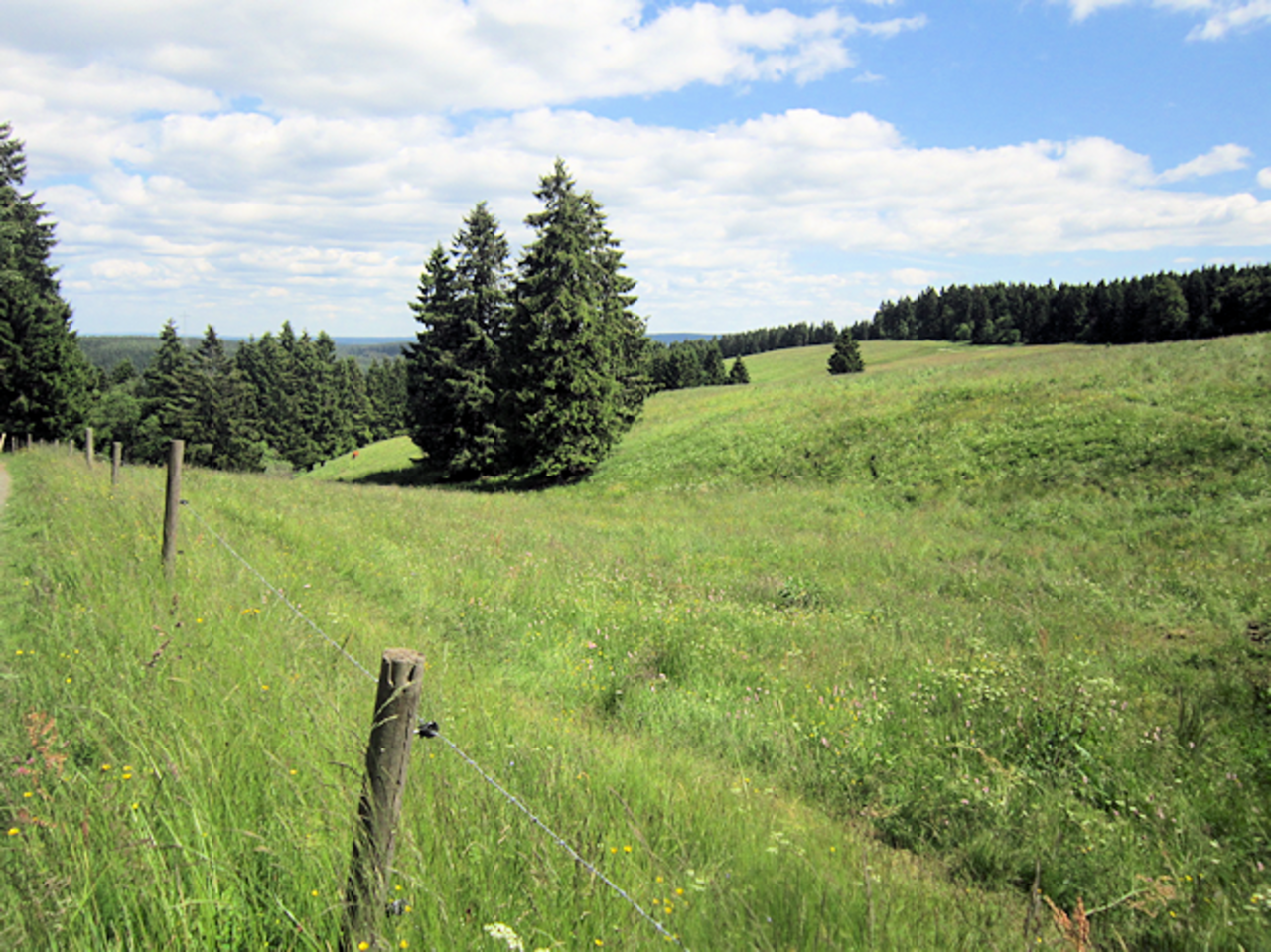Project
Ant assemblages in upland grasslands

Response of ant assemblages to changing management practices in permanent grasslands of Central Germany
Abandonment and underuse result in loss of area and habitat quality of upland grasslands. In the present study we use ants as indicators for the assessment of land-use options for the maintenance of permanent grassland.
Background and Objective
Permanent grasslands are key elements of European agricultural landscapes. However, traditional permanent grassland systems are threatened by either intensification or abandonment. In order to sustain both the productivity and habitat quality of permanent grasslands, innovative grassland systems and management strategies are needed. Soil biota such as ants play a key functional role for the ecological functioning and provision of ecosystem services. Hence, ants were chosen as target organisms of our study. The aim of this work is to evaluate grassland management, plant species composition (including plant functional traits) and environmental parameter variations over ant assemblage composition, richness and structure.
Target Group
Policy makers, scientists, farmers, national heritage associations
Approach
Land use management induces important changes in soil structure and quality, as well as changes in vegetation composition and complexity. Such changes cause alterations in the habitat structure, microclimate or food supply for ants. Nevertheless, there are other biotic (mutualism, competition, predation) and abiotic (geographical and topographical variables) factors that may structure ant assemblages and explain their variation along different management regimes. In this sense, ant assemblage variations may be explained by a set of biological, environmental and historical factors within permanent grassland in central Germany.
Data and Methods
- Field surveys including nest search
- Ant baiting
- Use of long-term plot experiments
- Analyses of long-term plant monitoring data
Our Research Questions
The research work will focus on three major topics:
- Exploration of impacts of grassland management extremes and sudden phase shifts from high diverse to species poor plant communities on ant assemblages.
- Impact of a novel grassland management system on ant assemblages
- Impact of grassland abandonment and loss of grassland connectivity on ant assemblages
Thünen-Contact

Involved Thünen-Partners
Involved external Thünen-Partners
-
Technische Universität Braunschweig
(Braunschweig, Deutschland)
Funding Body
-
German Academic Exchange Service (DAAD)
(national, öffentlich)
Duration
10.2015 - 9.2020
More Information
Project funding number: 57129429
Project status:
finished
Publications
- 0
Pérez Sánchez AJ, Schibalski A, Schröder B, Klimek S, Dauber J (2020) Disentangling the effects of host resources, local, and landscape variables on the occurrence pattern of the dusky large blue butterfly (Phengaris nausithous) in upland grasslands. J Insect Conserv 24:327-341, DOI:10.1007/s10841-019-00204-3
- 1
Pérez Sánchez AJ, Zopf D, Klimek S, Dauber J (2018) Differential responses of ant assemblages (Hymenoptera: Formicidae) to long-term grassland management in Central Germany. Myrmecol News 27:13-23

![[Translate to English:] [Translate to English:]](/media/_processed_/4/0/csm_Titel_Ant_Plot_1c3363e3f7.png)
![[Translate to English:] [Translate to English:]](/media/_processed_/b/3/csm_Titel_93px_Ant_Plot_0ef6a20d79.png)
![[Translate to English:] Logo des Bundesministerium für Ernährung und Landwirtschaft](/media/allgemein/logos/BMEL_Logo.svg)